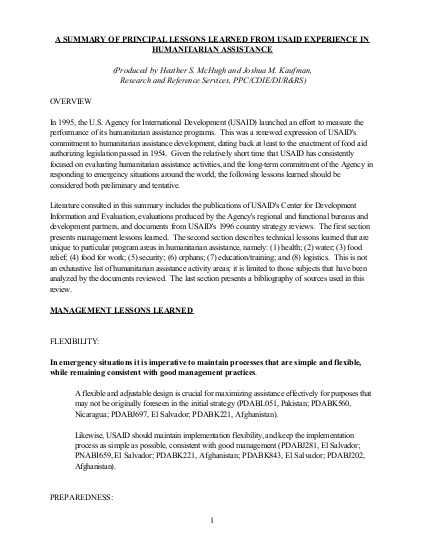
In 1995, the U.S. Agency for International Development (USAID) launched an effort to measure the performance of its humanitarian assistance programs. This was a renewed expression of USAID'scommitment to humanitarian assistance development, dating back at least to the enactment of food aidauthorizing legislation passed in 1954. Given the relatively short time that USAID has consistentlyfocused on evaluating humanitarian assistance activities, and the long-term commitment of the Agency inresponding to emergency situations around the world, the following lessons learned should beconsidered both preliminary and tentative.Literature consulted in this summary includes the publications of USAID's Center for DevelopmentInformation and Evaluation, evaluations produced by the Agency's regional and functional bureaus anddevelopment partners, and documents from USAID's 1996 country strategy reviews. The first section presents management lessons learned. The second section describes technical lessons learned that areunique to particular program areas in humanitarian assistance, namely: (1) health; (2) water; (3) foodrelief; (4) food for work; (5) security; (6) orphans; (7) education/training; and (8) logistics. This is notan exhaustive list of humanitarian assistance activity areas; it is limited to those subjects that have beenanalyzed by the documents reviewed. The last section presents a bibliography of sources used in thisreview